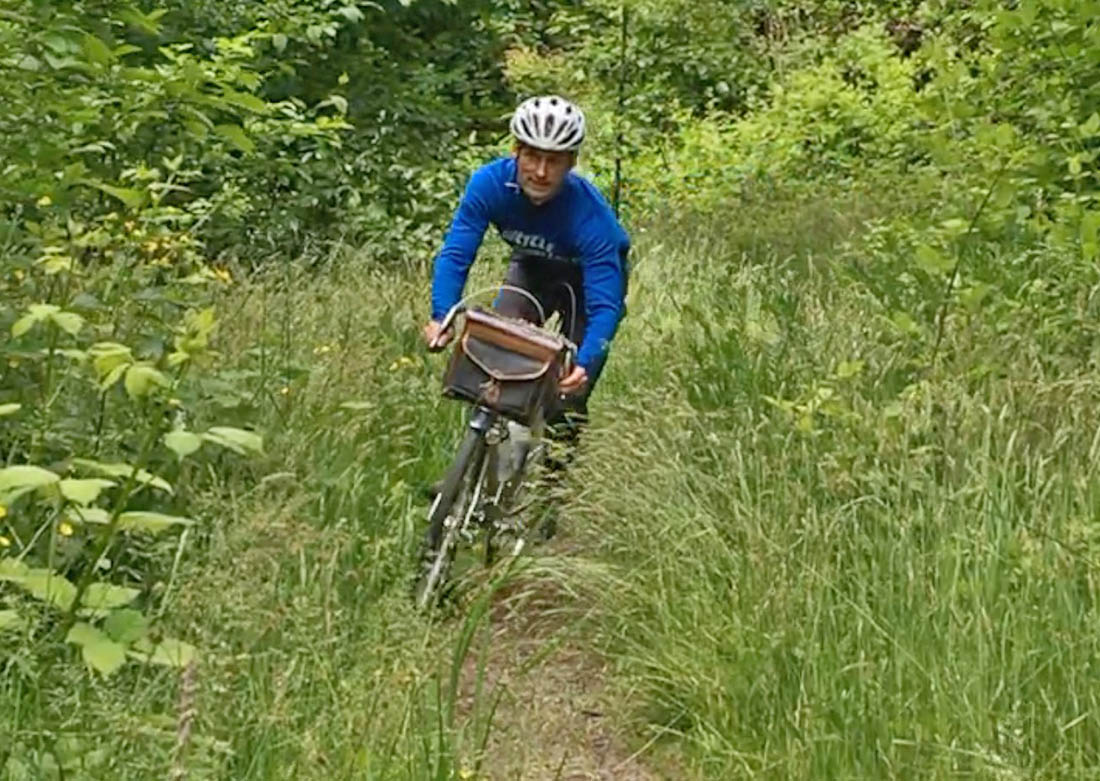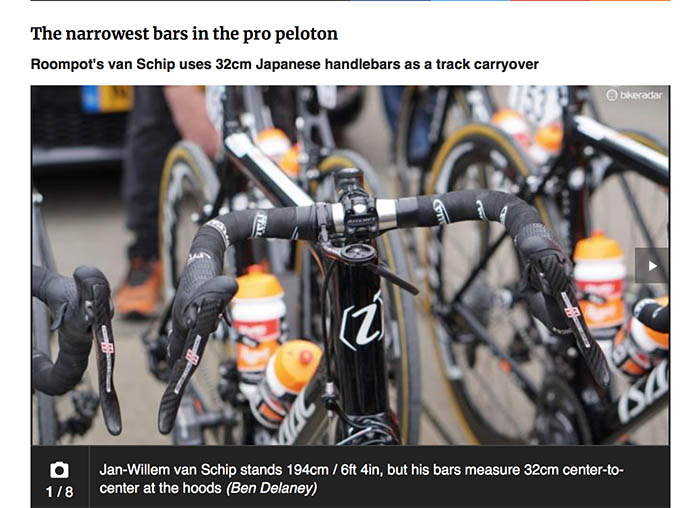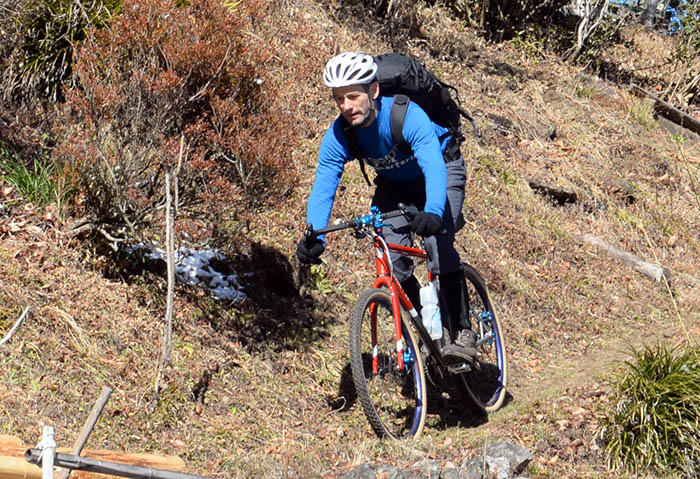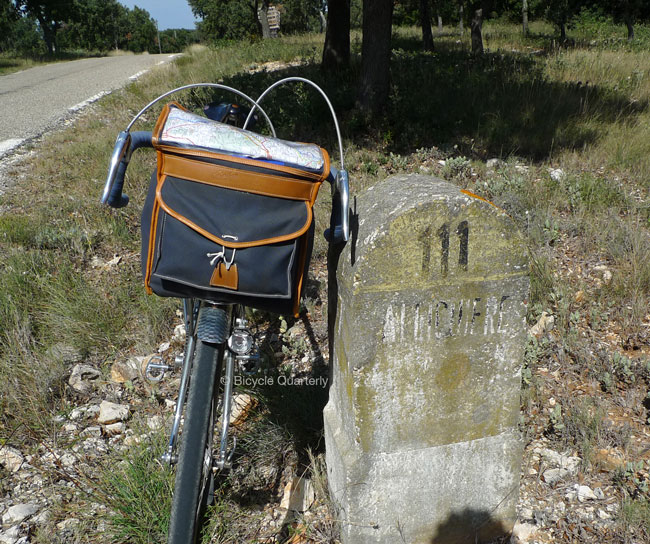Handlebars: Wide vs. Narrow

One of the hardest parts of bike fit is the width of the handlebars. There are many recommendations, but not all make sense. For decades, racers have been told that handlebars should match the width of their shoulders – but nobody seems to agree how to measure shoulder width! Let’s look at what we know about handlebar width.
Historically, handlebar width has matched the handling of racing bikes. When bikes had slack head angles and much wheel flop (1920s), bars were very wide: 46–48 cm was common to provide the leverage required to keep the bike going straight. When low-trail geometries were popular (1940s), bars shrank to 38 cm – that was enough to guide the bikes with a light touch. Narrow tires made the bikes less stable again (1970s), and bars grew to 42 cm. I wrote about that in detail here, but even that is not the full story.

Bike Radar recently had a feature about one of the tallest riders in the professional peloton, Jan-Willem van Schip, who uses ultra-narrow Nitto handlebars – measuring just 38 cm. (Bike Radar‘s sensationalist number of 32 cm is measured at the top of the hoods.) Regardless of how we measure van Schip’s bars, they are very narrow. That raises the question: Why does such a tall rider use such narrow bars?
The answer is simple: aerodynamics. Being so tall, van Schip needs every advantage he can get. Other pros also use relatively narrow bars: 40 and 42 cm are the norm. That got me thinking about the advantages of narrow handlebars. Here are a few:
- More aerodynamic: Bicycle Quarterly‘s wind tunnel tests found that lowering the stem by 2 cm reduced the rider’s wind resistance by 5%. Using handlebars that are 2 cm narrower probably has a similar effect – about twice the benefit of aero wheels (2-3%)!
- Easier to thread through narrow spaces: That is why track racers use narrow handlebars, and why I prefer them when riding through forests and in crowded cyclocross races.
- More comfortable for riders who bend their elbows: Your elbows can articulate inward, not outward, so (relatively) narrow handlebars work great for riders who bend their elbows to absorb shocks and guide their bikes with a light touch. Bars that are too wide can cause shoulder pains for these riders. Few riders need bars as narrow as Jan-Willem van Schip’s 38s, but 40–42 cm seems to work well for many riders. For me, 44 cm-wide bars are too wide for comfort on long rides.
- Weight: It’s not just the 2 cm of extra aluminum tubing: A wider bar exerts extra leverage, so it needs to be stronger. Nitto makes Rene Herse handlebars to our exclusive ‘Superlight’ specification from thinwall, heat-treated tubing. However, this tubing can only be used for handlebars up to 42 cm wide – it doesn’t pass fatigue tests if the bars are wider. So our wider handlebars are made to our ‘Lightweight’ specification, which, while still lightweight, is a bit heavier.
How narrow can you go? At some point, you will no longer have enough leverage over the steering. Guiding the bike becomes less intuitive, and countering crosswinds and bumps will require too much force. The bike becomes less fun to ride. But as Jan-Willem van Schip shows, you can go quite narrow. In fact, I’d love to send him a set of Rene Herse bars, which are much lighter than the Nittos he took off an old touring bike!

Wide handlebars also have their place, and some riders and bikes are better with them. Here are their main advantages:
- More leverage is good on high-trail bikes: Wide handlebars are almost a requirement on bikes with high-trail geometries, because there is so much wheel flop. With the extra leverage of wide handlebars, these bikes are easier to keep going straight. The wide bars also provide leverage in tight spaces off-road, when you want to turn the handlebars immediately, without first setting up the bike with subtle weight shifts.
- More comfortable for riders who lock their elbows: Our upper arms connect to our shoulders at an angle, and if you lock your elbows, your entire arms splay outward slightly. If your handlebars are too narrow, your shoulders feel strained when riding in this position. Bars that are wider than your shoulders feel more natural if you ride with your elbows locked.

There is another consideration: If you use a handlebar bag, it needs to fit with room for your hands to hold onto the bars. Gilles Berthoud handlebar bag bags are designed to provide a perfect fit with 42 cm-wide Rene Herse handlebars (above).

Most of all, the width of your handlebars is based on personal preference, and that’s why we offer our Rene Herse handlebars in widths from 37 to 50 cm. This covers the range for most cyclists – including ultra-tall professional racers!
Further reading:
- Bicycle Quarterly 21: Wind-tunnel tests of real-world bicycles
- Why handlebar shapes are so important.
- Handlebar info on the Rene Herse web site.


